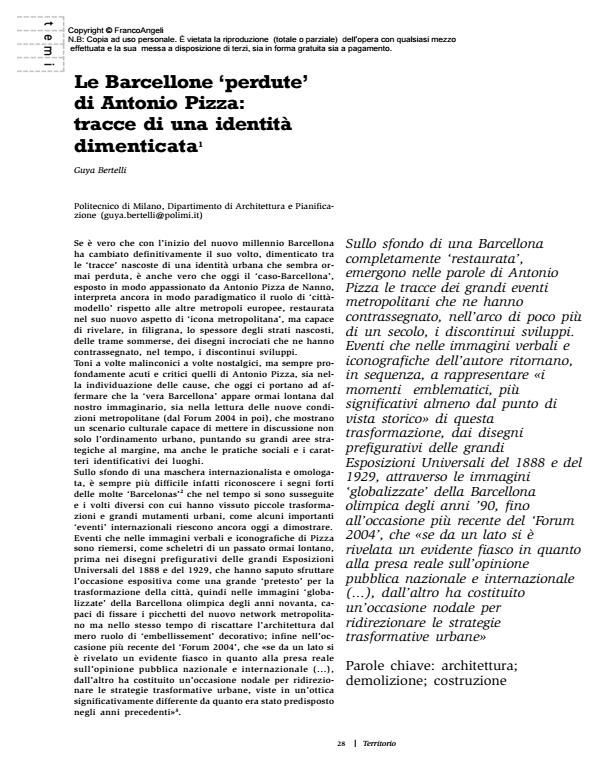Le Barcellone "perdute" di Antonio Pizza: tracce di una identità dimenticata
Journal title TERRITORIO
Author/s Guya Bertelli
Publishing Year 2010 Issue 2009/51
Language Italian Pages 6 P. 28-33 File size 668 KB
DOI 10.3280/TR2009-051007
DOI is like a bar code for intellectual property: to have more infomation
click here
Below, you can see the article first page
If you want to buy this article in PDF format, you can do it, following the instructions to buy download credits

FrancoAngeli is member of Publishers International Linking Association, Inc (PILA), a not-for-profit association which run the CrossRef service enabling links to and from online scholarly content.
Antonio Pizza’s lost Barcelonas: traces of a forgotten identity - The traces of great metropolitan events emerge in Antonio Pizza’s words against the background of a completely ‘restored’ Barcelona. They are events which in little more than a century have marked a discontinuous development during which, again in the words of the author, the city ‘partly re-invented itself’, exploiting the opportunity of the expo as an important pretext to transform itself. They are events which have re-emerged in sequence in Pizza’s verbal and iconographic images, representing ‘the most significant emblematic moments, at least from a historical viewpoint’ of this transformation, ranging from the early designs of the great universal expositions of 1888 and 1929, to the globalised images of the Barcelona Olympics in the 1990s and finally to the most recent of the "Forum 2004", which "while on the one hand clearly turned out to be a fiasco in terms of its effect on national and international public opinion (..),on the other hand it constituted a key opportunity to redirect strategies for urban transformation".
Keywords: Architecture; demolition; construction.
- From Smart City to Smart Region Andrea Rolando, Stefano Di Vita, pp.73 (ISBN:978-3-319-17337-5)
Guya Bertelli, Le Barcellone "perdute" di Antonio Pizza: tracce di una identità dimenticata in "TERRITORIO" 51/2009, pp 28-33, DOI: 10.3280/TR2009-051007